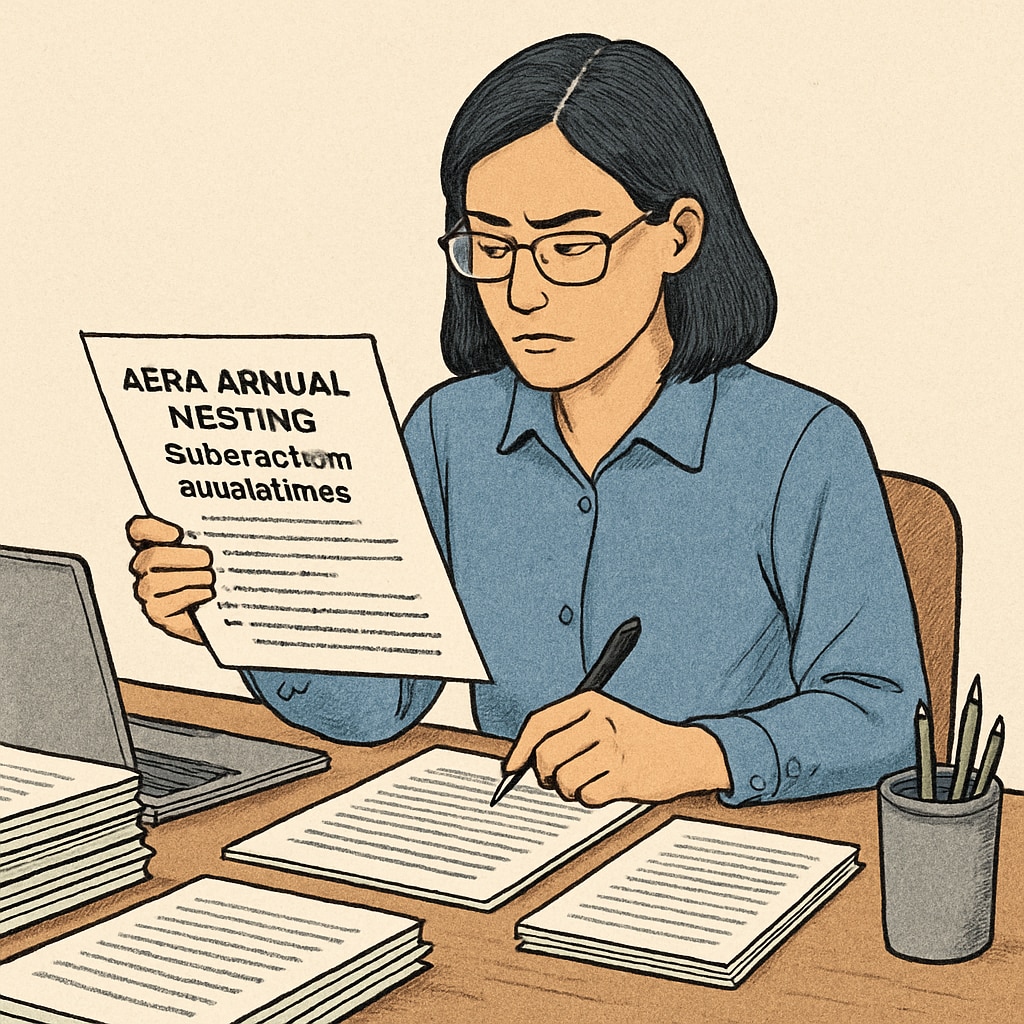The AERA Annual Meeting is one of the most prestigious platforms for education researchers, offering a unique opportunity to share innovative studies on K-12 education. However, the competitive nature of this event, coupled with a selective paper acceptance process, makes it essential for researchers to understand the submission mechanics and develop effective strategies. This article delves into the paper acceptance rate and provides actionable advice for success in academic publishing within AERA.
Understanding the AERA Submission Process
The first step to successfully submitting your work to the AERA Annual Meeting is understanding its rigorous selection criteria. Each year, thousands of researchers from various education disciplines submit proposals, but only a fraction are accepted. The acceptance rate typically hovers between 25% and 35%, depending on the year and the specific session. These numbers emphasize the importance of submitting high-quality, well-organized proposals.
For example, AERA evaluates submissions based on originality, clarity, and relevance to the conference theme. Researchers must align their work with the overarching goals of the Annual Meeting, which often focus on equity, innovation, and advancements in education policy. Papers that demonstrate a clear contribution to K-12 education often stand out in the review process.

Key Strategies to Enhance Acceptance Chances
To improve your chances of acceptance, consider implementing the following strategies:
- Understand the Call for Proposals: Read the guidelines thoroughly and tailor your submission to match the conference’s objectives.
- Focus on Clarity and Structure: Ensure your proposal is well-organized and clearly articulates your research questions, methodology, and findings.
- Highlight Relevance: Demonstrate how your research addresses current challenges or advances in K-12 education.
- Collaborate with Peers: Engage with colleagues to review and refine your submission before submission.
- Leverage Previous Research: Cite relevant studies and show how your work builds on existing literature.
In addition, networking can play a crucial role in the submission process. Attending pre-conference workshops and connecting with experienced researchers can provide insights into how to navigate the AERA system effectively. For further guidance, you can explore resources such as Education Research on Wikipedia and Education on Britannica.

What to Do If Your Submission Is Rejected
Rejection is a common experience in academic publishing, but it also offers an opportunity for growth. If your paper is not accepted, use the feedback provided by reviewers to improve your work. Revisions may involve refining your methodology, clarifying your arguments, or aligning your submission more closely with the conference theme.
Moreover, consider submitting to other educational conferences or journals. Platforms such as the National Council of Teachers of English (NCTE) or the International Society for Technology in Education (ISTE) can be excellent alternatives for showcasing your work.
Persistence is key, and many researchers find success after resubmitting refined and stronger proposals in subsequent years. As a result, rejection should be viewed as part of the academic journey rather than a deterrent.
Conclusion: Preparing for Success at AERA
Successfully navigating the AERA Annual Meeting’s submission process requires a combination of strategic planning, strong research, and persistence. By understanding the acceptance criteria, tailoring your proposals to the conference theme, and leveraging peer feedback, K-12 education researchers can significantly enhance their chances of acceptance.
Ultimately, being part of the AERA Annual Meeting provides an unparalleled platform for researchers to gain visibility, connect with thought leaders, and contribute to the future of education. With preparation and determination, you can showcase your work on this prestigious stage and make a meaningful impact in the field of K-12 education.
Readability guidance: Use concise paragraphs, short sentences, and bullet points to maintain clarity and engagement. Integrate transition words such as “however,” “for example,” and “in addition” to enhance flow. Ensure the article is accessible to a wide audience while maintaining a professional tone.


